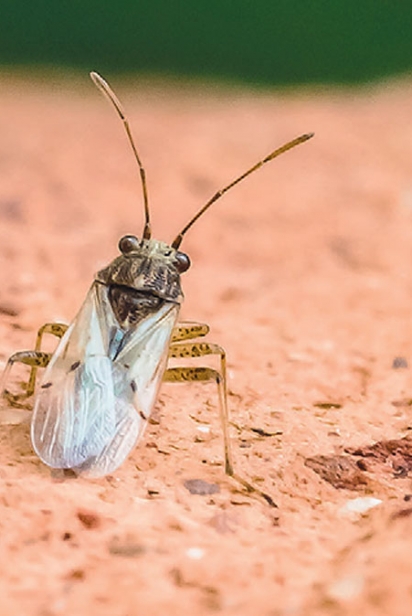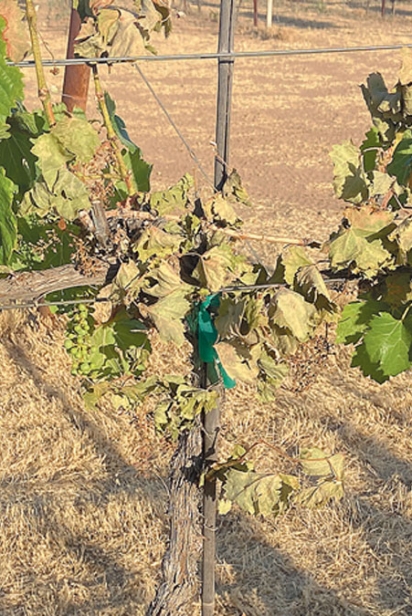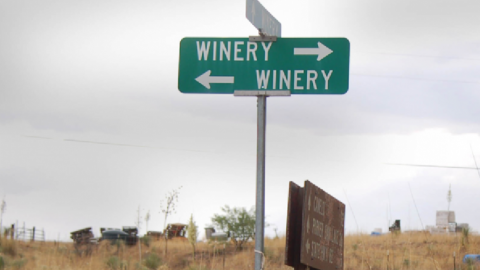Heat, Hail and Health Affect Southern Arizona Wineries
Southern Arizona’s Wineries Learn to Cope with a Challenging 2020
Mid-September is normally a busy season in Arizona’s vineyards. It’s time for harvest and crush, when winemakers begin the painstaking alchemical magic of turning grapes into fine wines. But this year, the vineyards were quiet and the crush pads empty. The harvest, which usually runs about six to eight weeks in August and September, was both early and short due to the extreme heat of June and July. In a year that will go down in the history books as one of the worst ever—with its pandemic, civil unrest, natural disasters and chaotic weather—Arizona’s vintners have dealt with their share of the pain.
At his namesake winery in Willcox, Sam Pillsbury says it was the hottest summer in 20 years. Willcox, the largest of Arizona’s three American Viticultural Areas, sits at more than 4,000 feet, so while the heat wasn’t as intense as in Phoenix or Tucson, “We were up at 103 quite a few days, and the vines started to shut down,” he says. “At 103 our wells can’t really keep up with the water demands, and different varieties respond differently to these kinds of conditions.
“Petite sirah is the worst affected, and you can counter this by adding more water. But basically, the grape clusters start turning to raisins.” Pillsbury says he managed to water a couple of small blocks enough to save them, but his 11-year-old original plantings of the varietal were particularly hard hit. Still, it wasn’t a total loss. He says he was able to sell the raisiny grapes at a discount to other winemakers who will use them to make sweet dessert wines or to balance blends that might have too much astringency.
Pillsbury also sees another bright side to the situation. When the vines are using the water to survive instead of putting it into the fruit, the berries are smaller. “I think our wines might be a little more concentrated this year, which is not a bad thing,” he says.
Just down the road from Pillsbury at Bodega Pierce, founder and co-owner Dan Pierce explains that, while they also suffered from the heat and short harvest, they experienced a couple of other problems, as well.
A late freeze in early May took out a substantial portion of the fruit in their blocks of viognier, a late-flowering white varietal. Many of the vines were still in bloom when the freak frost hit, and while the leaves and plants themselves didn’t suffer much damage, the tender flowers dropped from the vines, resulting in a loss of a good portion of the crop.
“So then, what do we do with the viognier we harvested?” says Barbara Pierce, co-owner and Dan’s wife. “We usually do two things—a single varietal and some blending—but this year we didn’t have enough for the single varietal.” Dan Pierce says they did a cold ferment with the fruit that was left, a process that preserves the fruit flavors and aromatics.
Mother Nature wasn’t finished. A late-summer plague of false chinch bugs descended on the Pierce’s and neighboring vineyards. “It went from some bugs to, in three days, they were everywhere,” says Dan. “You could pick them up and they were falling off your hand like it was digitally falling apart.” The tiny insects, which normally feed on London Rocket and other weeds, are especially destructive to younger plants when they move into the vines. The Pierces and their neighbors ended up aerially spraying the infested blocks.
Even though the monsoon was a no-show in most of Arizona this year, winemaker Todd Bostock at Dos Cabezas WineWorks says the crop at their Pronghorn vineyard in Sonoita, one of Arizona’s other AVAs, was a total loss after two early-August hailstorms, 10 days apart. “The first one was pretty damaging,” he says. “We felt like there might be a little bit we could save, so we actually sent a crew through to drop the stuff we didn’t want to pick so that we could pick the stuff we wanted. And then later that night, hail came through and took care of the rest of it.”
He continues, “The fruit wasn’t fully ripe, and it was, like, ‘Gosh, do you try to have damaged plants ripen the stuff? Or do you cut it off and work on getting the plants healthy for the winter so you can try again next year?’ And that was the decision we made.” By some estimates, 99% of the Sonoita crop was destroyed—about 17% of the total production in the state.
Dos Cabezas owns a larger vineyard in Willcox, so Bostock says they’re still making a 2020 vintage. He says the balance on the whites, in particular, is a little different. “The job is to let the character of the vintage, that story, come through, but it has to taste good. This year, that means acids are a little lower, pH is a little higher, alcohol’s probably going to be a little higher. But, you know, you have to put all the pieces together and you do what you do with the vintage.”
Even before nature’s wrath rained down on the vines, the COVID pandemic was wreaking havoc on winery businesses. Tasting rooms were dealing with rapidly changing rules, regulations and CDC suggestions all spring; events were canceled; and market channels were disrupted as restaurants closed their doors.
Pillsbury says that because of social distancing and limits on tasting room capacity, the wine bar atmosphere in his tasting rooms in Willcox and Cottonwood has reverted to an old-style tasting experience, one he’s always preferred. That means customers have more of a true educational wine experience.
“Our staff is serving little groups of two or three or four people and doing a constant one-on-one, which the customers love because they’re getting massive attention and finding out a lot more about our wines than they would ordinarily when the staffers were just running around keeping glasses full.”
Valerie Fisch, manager of Pillsbury’s Cottonwood tasting room, says the type of clientele has changed. “The demographic of the people sitting down and going through a flight right now has transformed. We’re not in wine crawl party mode anymore. We’ve got people really looking for a unique experience.”
Pillsbury says there’s an added benefit. “We’re open less now. We have fewer staff, so our overhead is lower, and we’re actually selling more wine than we did a year ago,” he says.
The Pierces say that business has changed for them as well, but it hasn’t all been bad. Even though they’ve lost income on canceled events, their wine club buyers have remained loyal and membership is growing, especially with visitors to the Verde Valley tasting room and winery. Surprisingly, many of their Willcox guests are coming from Phoenix. Bodega Pierce requires reservations, masks, and social distancing in both of the tasting rooms.
“I think they like to join once they like the wine,” says Barbara. “And they like the relationship. They like the interaction. They know our story.
They like the smallness.”
Bostock at Dos Cabezas also noticed increased summertime traffic from Phoenix, even though their tasting room capacity was limited. “Folks that would normally flee the state when temperatures rise showed up here, just dying to get out,” he says. “We’re fortunate that they discovered it’s a viable option in the summer. We’re cooler; the weather’s beautiful. And hopefully a lot of folks that discovered us will put us on their list.”
As the pandemic wore on through the spring and summer, Bostock teamed up with Kent Callaghan of Callaghan Vineyards to offer educational tasting classes via Zoom. He says it helped them stay afloat and could become a feature of their offerings so people can stay connected, even when they’re reluctant to travel for an in-person tasting.
Even with nature’s vicissitudes, the vintners I spoke with were cautiously optimistic about the future, an attitude that’s practically a job requirement for people in agriculture. “We’re gonna be OK,” says Barbara Pierce, a sentiment echoed by Dan. “Yeah, we’re gonna be OK.”
Todd Bostock takes it a step further. “You get over one obstacle and then there’s another one and you go, ‘All right, how are we gonna do this?’ We do this in the way that we like to tackle things: by maintaining our identity and staying true to what we’re up to. Let’s try to figure it out.”
WINERIES
Bodega Pierce
bodegapierce.com
Callaghan Vineyards
callaghanvineyards.com
Dos Cabezas WineWorks
doscabezas.com
Pillsbury Wine Company
pillsburywine.com










